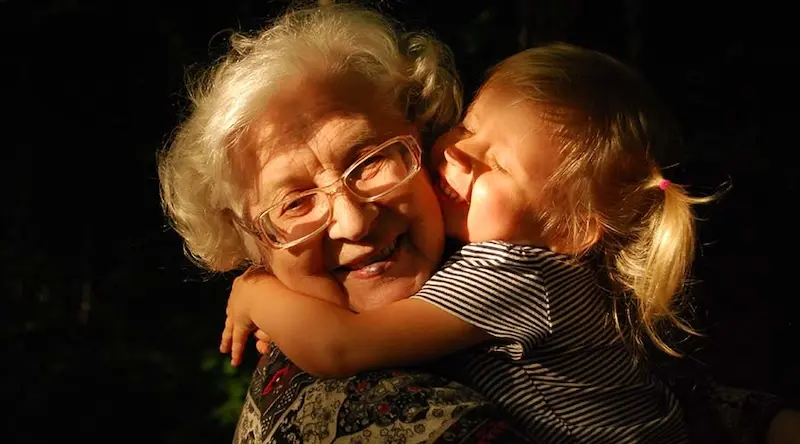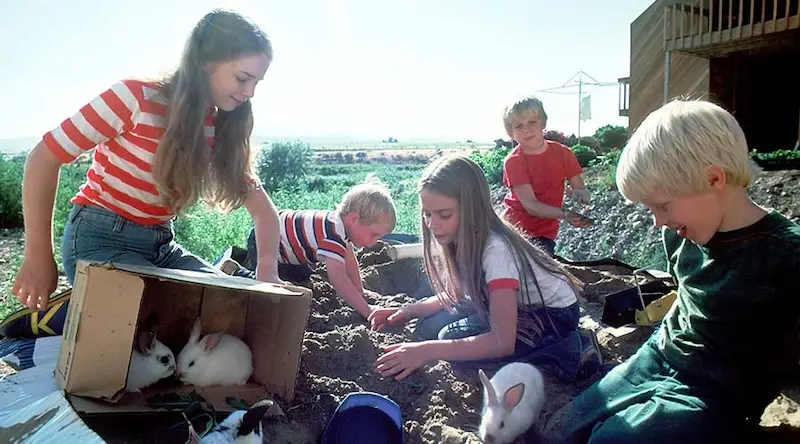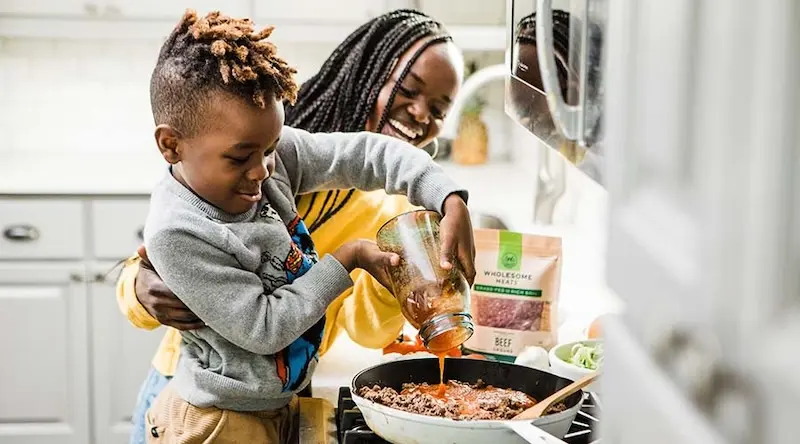settings
children
With Famly since
Empathy is at the heart of what it means to be human.
It lays the foundations for us to be able to act ethically, to show love, and to have good relationships. With particular focus, it means very young children being given the opportunity to thrive.
Empathy begins with being able to take another person’s perspective, or to “walk in another’s shoes”.
Have you ever wondered what is happening in our young children’s minds when it comes to empathy? We will never truly know this, but there are many ways in which we, as early years professionals, can make sense of the nurturing aspects of empathy we observe within our everyday practices.
You may be reading this and thinking, “I have seen empathy displayed by children in my work setting.” This is exciting to know, and you wouldn’t be wrong, but at the same time, children may not show much empathy either. This is also normal and can be linked to a child’s developmental stage.
For example, you may have seen children hugging each other if one child is upset, and another child goes over to comfort them. This is empathy. Or, on the other hand, we may see a child look at another child and laugh at them. Some children may not have developed a sense of empathy yet and this, of course, is ok.
The first child in the examples given above (who gives a hug) shows that the child has an emotional response to another person’s distress and this is where the roots of empathy begin.
Knowing how to handle those big feelings, and being able to translate them into behaviour that can help another child, is complex and takes time, as well as lots of practice.

What does empathy mean to a child?
Empathy can help a child understand:
- That they are a distinct person,
- That their feelings and perspectives are different from other people’s, as well as starting to recognise these feelings,
- That their feelings matter to you and others in the setting.
By connecting these feelings, they can start to regulate their own emotional responses.

Children will also begin to be able to put themselves “into someone else’s shoes” and start to imagine how they might feel were they another person. From this, they will also think about the next action they could take, to help another child feel better. In this way, empathy can be seen as an ability that builds on emotional self-awareness.
But remember, children will not be able to do all the above in one go. Very young children are just starting to navigate their own feelings and beginning to find themselves, in terms of regulating their own emotions.
Empathy needs to be seen as a work in progress throughout a child’s life because it does not just appear automatically. While we may be born hard-wired with the capacity for empathy, its development requires experience and ongoing nurturing.

“Building an understanding of what others are feeling, how their own actions can impact on others, and why someone might be experiencing feelings at a particular time is a valuable life skill for children to possess.”
Goodstart.org.au
The big ideas

Laying the Foundations for Empathy
Displays of empathy in children are learnt behaviour from those around them, which supports the nurturing, loving emotions of the child.
Similarly, we must understand that empathy might not be prevalent in the child’s life. Psychological and physical trauma can have profound effects on development and well-being throughout children’s lives. And, exposure to chronic adversity (like abuse, neglect, and trauma) impairs social and emotional processing.
Kowing this, we can reflect on how we lay the foundations for empathy with our care.
Empathy is an emotion and a cognitive experience. Babies are born with the ‘components’ of the emotions of empathy that develop over time.

Babies start to reflect the emotional state and expressions of those around them. This is linked to mirror neurons, and even babies who are just a few days old often show early signs of responsiveness to other babies and infants. We don’t teach babies how to do this, so we know they are born hardwired to map certain experiences of others within their brains, and then react to this with their bodies.
Babies have early emotional experiences with their caregivers which supports the development of empathy. As a caregiver or professional, it is important to nurture and care for babies and infants, as they start to make crucial associations between positive human interactions and feeling calm and safe.
Children who feel secure and loved develop sensitivities towards others and their emotional needs. This is called ‘attachment’ and is the connection between a caregiver and baby or child.
Different brain systems enhance nurturing by supporting parent-infant attachment, as well as emotional wellbeing, learning, and giving attention.
It can be easy to think of your primary function as a practitioner, as being the child’s secondary caregiver, but have you taken the steps to think about the child holistically?
Have you reflected on the interactions and the relationship you have gained with the child’s main caregiver? Have you been involved in a discussion around the ethos of nurturing care and what this means to the child, the setting, and the main caregiver?

“Secure attachment can form with any caregiver (parent or professional) who provides security, safety, affection, and comfort.”
Aaron Bradbury
How children start to feel and think
Children’s emotional state develops as they mature and get older. The cognitive components for empathy start to emerge and allow children to build on the emotional templates that they begin to form during the first years of life.
By the age of three, children become more aware that others have separate feelings and experiences to themselves. They may not necessarily know what to do with those feelings, or how to respond, but the awareness is forming nonetheless.
These skills and behaviours unfold very differently for each child and depend on their own experiences. Our role as early years professionals is to provide a nurturing environment, where children feel safe and secure, and provide empathy within the context of the ethos and approach of the setting.
Transitions for children, such as the morning drop-off, and the handover at the end of the day, are opportunities to work with the children and families to create a nurturing environment for empathy, and plant the seeds to help children grow and develop.
However, empathy is not something we can sit children down and teach them. Instead, we need to provide opportunities for rich, loving environments which support an ethos of play, care and love.
And, we as early years professionals can also model empathy within our everyday practices. Remember that children are always listening and watching. Our everyday interactions are being observed- just like you observe children, they are continually observing us too.

Opportunities for reflection
We need to be reflecting on the reasoning behind our own actions in our role, and continually look at nurturing empathy within our settings as a whole ethos, including staff, children, and parents and carers.
To begin to do this, we might ask ourselves:
- How are we nurturing ourselves to be able to nurture the children in our care effectively?
- Are we seeking the voice of the child and truly advocating for uniqueness in all that we do?
- Where would you start in developing a nurturing empathetic approach in your setting?
Then, you can reflect on how to develop those nurturing, empathetic approaches in your Early Years practice by considering the following points:
- Make sure that you are familiar with the concepts of child development in regards to brain development and parent and carer relationships and start to link these to your everyday practice.
- Familiarise yourself with contemporary concepts, such as Aaron Bradbury’s work on the science around nurturing, relationships, and Tamsin Grimmer’s work on developing a loving pedagogy .
- Explore the meaning of the unique child and the voice of the child and how this is reflected at your setting.
- Value your expertise, but also value how the practice you offer has been developed through research-informed practice.
- Think about the environment in your setting- to what extent does the setting adopt a nurturing, positive approach to child development? Does your ethos support a positive approach to learning?
- You know your children well, so develop an ethos within your setting that promotes every child being successful in life and becoming a resilient and emotionally intelligent human being.
Further reading:
- Bernhardt, B. C. & Singer, T. (2012) The neural basis of empathy. Annu. Rev. Neurosci. 35, 1–23.
- Bradbury, A. (2022) Nurturing in the Early Years – What the science tells us? Early Education Journal. Volume 96. Pp7-9. ISSN 0960-281X
- Bussey, M.C., Wise, J.B. (2007) Trauma transformed: An empowerment response New York: Columbia University Press.
- Goodstart (2018). Why teaching children empathy is more important than ever. [Online]
- Grimmer, T. (2021) Developing a Loving Pedagogy in the Early Years: How Love Fits with Professional Practice. London. Routledge
Try learning journals for free
Add observations, and build digital learning journals to share with families instantly. All with your completely free 14-day trial.
Get started









